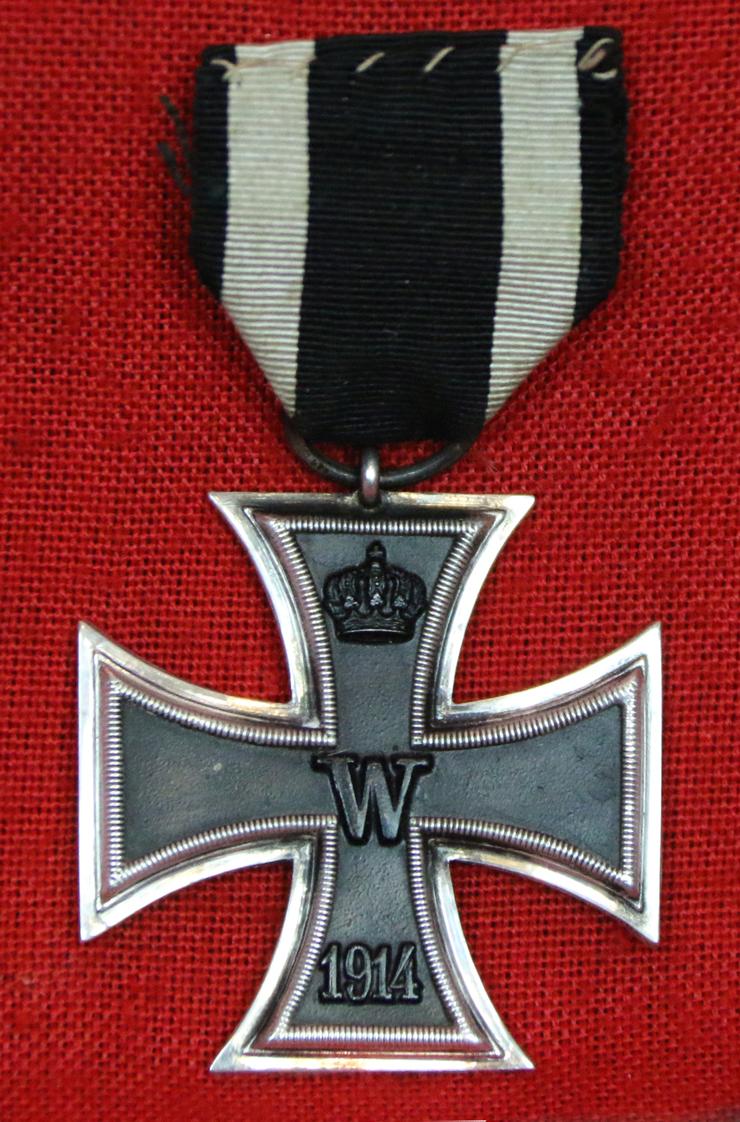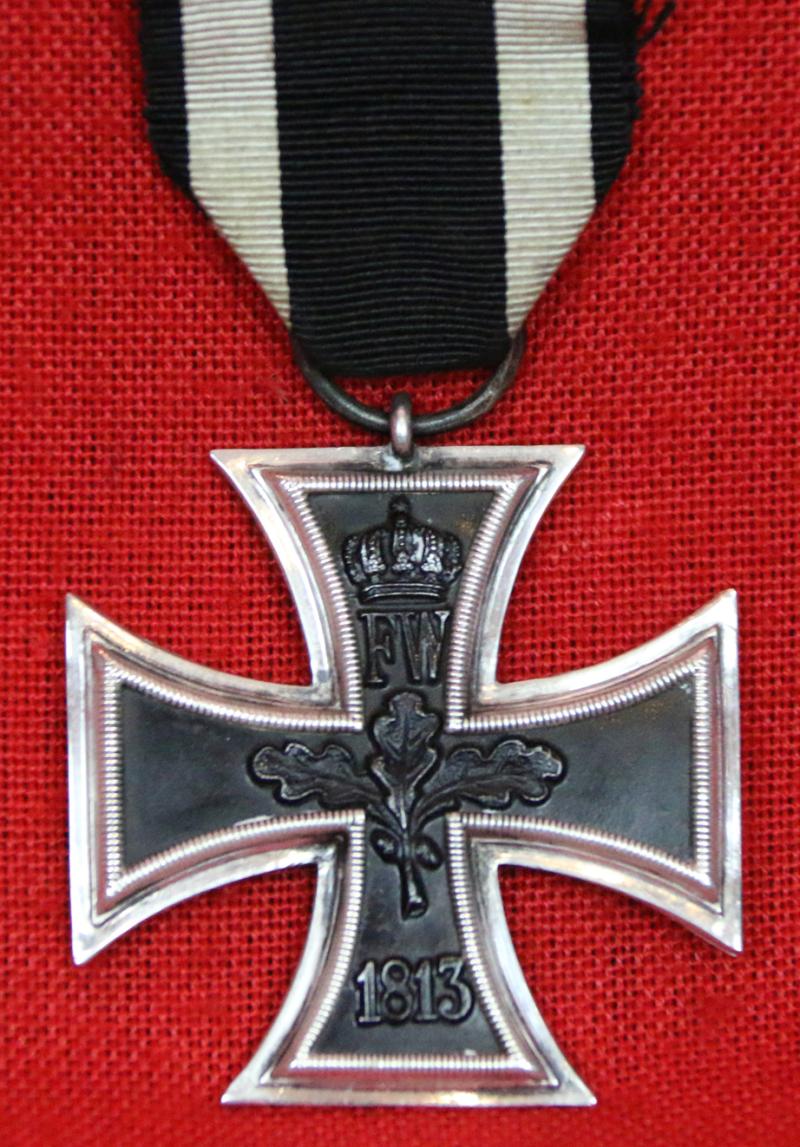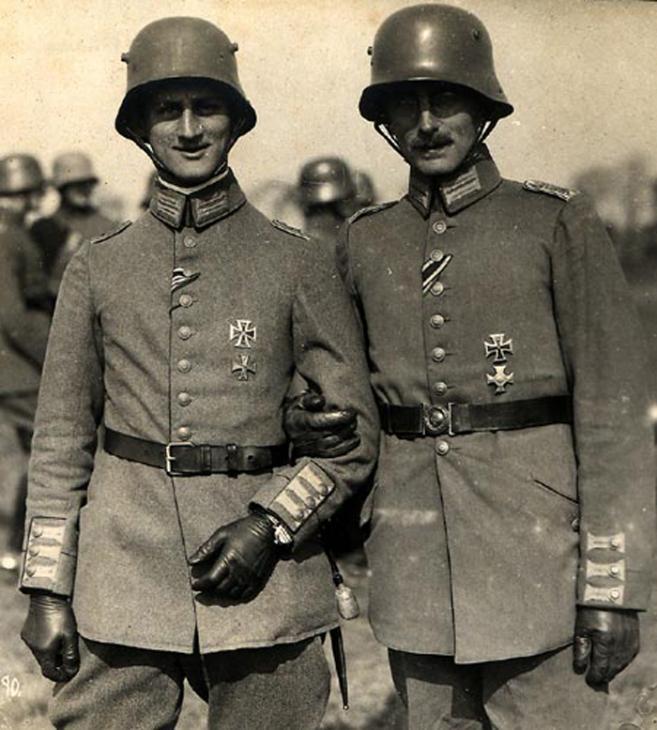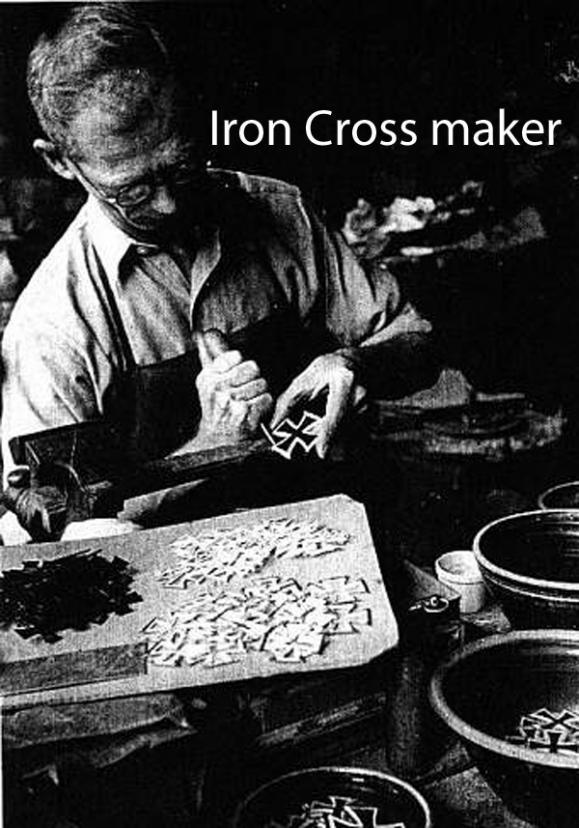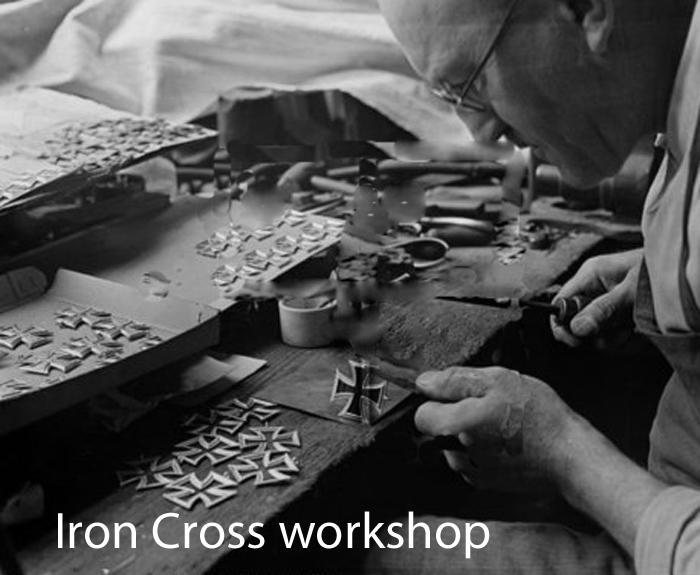An Excellent German WW1 Iron Cross, Near Mint Condition, Silver Mount rim and Iron Centre Issued in WW1 But Worn in both WW1 and WW2. WW2 Souvenir of a Former D.Day Combat Veteran
Souvenir from a WW2 veteran. Taken from a veteran German soldier, by a British soldier after landing on Juno Beach at the Normandy landings in 1944 in the early summer.
From a 1st Btn. Suffolk Regt. veteran fighting continually right through to the end of the war near Bremen. We acquired his WW2 campaign medals about 3 years ago. A very good medal with silver rim and iron centre. Next to the Victoria Cross, it is the most famous medal in the world. The Iron Cross was awarded for bravery in battle as well as other conspicuous military contributions in a battlefield environment. The Iron Cross 2nd Class was worn in one of two different methods: When in formal dress, the entire cross was worn mounted alone or as part of a medal bar. For everyday wear, only a ribbon was worn from the second hole in the tunic button.
The Iron Cross is a black four-pointed cross with white trim, with the arms widening toward the ends, similar to a cross pattée. It was designed by the neoclassical architect Karl Friedrich Schinkel and reflects the cross borne by the Teutonic Knights in the 14th century.
The ribbon for the 1813, 1870 and 1914 Iron Cross (2nd Class) was black with two thin white bands, the colours of Prussia. The non-combatant version of this award had the same medal, but the black and white colours on the ribbon were reversed.
Initially the Iron Cross was worn with the blank side out. This did not change until 1838 when the sprig facing could be presented.
Since the Iron Cross was issued over several different periods of German history, it was annotated with the year indicating the era in which it was issued. For example, an Iron Cross from the First World War bears the year "1914", while the same decoration from the Second World War is annotated "1939". The reverse of the 1870, 1914 and 1939 series of Iron Crosses have the year "1813" appearing on the lower arm, symbolizing the year the award was created. The 1813 decoration also has the initials "FW" for King Frederick William III, while the next two have a "W" for the respective kaisers, Wilhelm I and Wilhelm II. The final version shows a swastika.
It was also possible for a holder of the 1914 Iron Cross to be awarded a second or higher grade of the 1939 Iron Cross. In such cases, a "1939 Clasp" (Spange) would be worn on the original 1914 Iron Cross. (A similar award was made in 1914 but was quite rare, since there were few in service who held the 1870 Iron Cross.) For the First Class award the Spange appears as an eagle with the date "1939" that was pinned above the Cross. Although two separate awards, in some cases the holders soldered them together.
A cross was the symbol of the Teutonic Knights (a heraldic cross pattée), and the cross design (but not the specific decoration) has been the symbol of Germany's armed forces (now the Bundeswehr) since 1871. As with all our items, each one comes with our unique, lifetime guarantee, certificate of authenticity
Code: 25728
220.00 GBP

